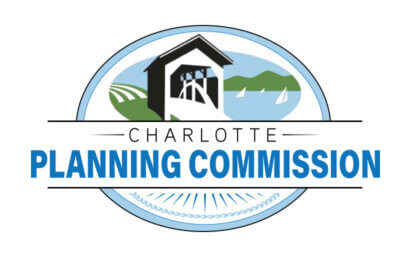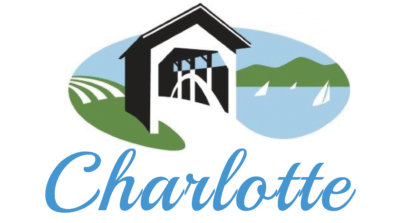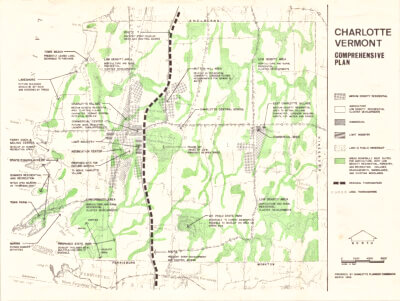Proposed changes to Town Plan & Land Use Regs: A primer from the Planning Commission
At Town Meeting, Charlotte residents are being asked to vote on a set of proposed updates to the Town Plan and Land Use Regulations (LURs). These proposals were developed by your Planning Commission, with input from residents, the Selectboard, and reviewed by our town attorney, over the past 2 ½ years.
It’s important to understand the relationship between the Town Plan, LURs, and the process by which development does (or does not) occur in town. The Town Plan is a policy document that sets forth the goals and objectives for Charlotte’s future, in many dimensions, including land development, energy use, town facilities, and conserving natural resources and the open landscapes, which are core values for residents. The LURs are the main rule book that reflect the goals, policies and planning maps within our Town Plan.
Charlotte’s Town Plan was last updated in 2018 and approved by residents’ vote in 2019. The plan and LURs are living documents that need to be regularly updated to stay current with changes in state law, community values, and changes in the environment, such as an aging population, reduced school enrollment, the need for more diverse housing options, a changing climate, etc. If we don’t update the LURs, they risk becoming irrelevant, thus becoming more difficult to apply to development projects reviewed by the town and the state.
On the warrant for your upcoming Town Meeting vote are four separate articles proposing changes to our Town Plan and Land Use Regulations:
Article 6 proposes a Town Plan map change for the East Charlotte Village Commercial District (ECVCD) that extends its boundaries by ± 24 acres from existing (± 20 acres now), to ± 44 acres. The new boundary affects 16 parcels vs. 10 parcels now. This is a separate article because it would change the zoning district map in the Town Plan.
Article 7 would change the LURs to adjust the allowed density for the East Charlotte Village Commercial district from 5 acres per unit to 1 acre for residential development, and permit wastewater and water lines to connect outside the commercial district to support projects inside the district. It also reinforces that all projects must maintain and respect the historic character of the area.
Article 8 would update the LURs to enable the growth of accessory on-farm businesses, as required by the Vermont Legislature in 2018. This version includes less restrictive rules that provide Charlotte farmers opportunity to develop new farm-related accessory businesses, while still enforcing town standards.
Article 9 proposes several minor LUR updates and corrections to address glitches, grammatical errors and obsolete sections. For example, it eliminates farm cafés as a use (to be replaced by accessory farm businesses), clarifies types of allowed outdoor storage, and adds and updates many key definitions, such as “Right of Way” and “Impervious Surface.”
Some residents have raised questions and concerns about the proposed Town Plan map and LUR changes for the East Charlotte Village Commercial District (Articles 6 and 7). During its review and hearing process, the Planning Commission produced a theoretical buildout analysis of these proposed changes, posted to the project page on the town website. It said that up to 45 units could potentially be built within current rules, while up to 65 units could be built with these changes. However, it’s very important to recognize that all development in town is also constrained by septic and water capacity, and other variables, including zoning standards and housing market demand.
As with all proposed development, any projects in the East Village are subject to a robust and comprehensive review by the Planning Commission and Zoning Board, who are bound by the LURs. If anyone has any doubt about how these rules are applied by our citizen boards, just look around you: Charlotte remains a beautiful community that has retained its rural character, with a combination of working farms, forests, individual houses on large lots, and open landscapes, with stringent protection of our natural resources.
No one is suggesting we abandon our high standards. At their core, these changes are about fine-tuning the rulebook (LURs) to allow limited, very targeted growth in an existing village center. Whatever projects are proposed will be held to the same high standards as are applied elsewhere in town and would be rejected if they don’t meet those standards.
It’s also key to place these proposed changes in the context of Vermont land use policy, as embedded in state law (24 VSA 4302) and in our Town Plan. Vermont and Charlotte encourage development in established village centers, while discouraging sprawl development across open landscapes. This was reinforced by the results of a 2010 study, which asked residents what they value about the East Village, and what changes they want to see going forward. Many respondents prioritized modest village growth in housing, and some kind of café or community gathering place, while maintaining the historic character of the village area.
But the current minimum of five acres per housing unit that’s now required in the village center directly contradicts these goals in the town plan. This makes it very difficult for even modest development to proceed. Hence, the Article 6 and 7 proposals. If adopted, they would allow mixed use and planned residential projects in the East Village Commercial District with diverse housing options for people to live, work and recreate. That’s the goal.
The Planning Commission will be posting more information in the next couple of weeks, including a follow-up article, a video panel discussion, questions and answers with more details, and posts to the Front Porch Forum. We urge everyone to learn more about these proposals before you cast your votes. For more information, see the project page on the town website, or contact Larry Lewack, Town Planner, at (802) 425-3533 ext. 206, or via email.
Related Stories
Popular Stories
If you enjoy The Charlotte News, please consider making a donation. Your gift will help us produce more stories like this. The majority of our budget comes from charitable contributions. Your gift helps sustain The Charlotte News, keeping it a free service for everyone in town. Thank you.
Andrew Zehner, Board Chair







